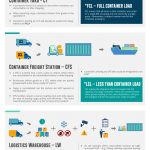Hands up everybody who wants to annoy their customers, lose money and leave their business reputation in tatters? Problems with e-commerce fulfillment are one of the fastest ways to lost business, and if you don’t deal with them quickly, they’ll only get harder to solve as your business grows.
In today’s blog post, we want to examine three of the most common issues that can cause major headaches for e-commerce businesses.
1.International Shipping

Isn’t the internet cool? Nestled among its many benefits (in between cute cat videos and social media envy), is, arguably, one of the most impressive features of our global village – the ability to easily order goods from anywhere in the world and have them shipped to you, in a flash. Well, that’s the idea, anyway…
The majority of your international customers will never consider how complicated it is to get their orders across borders and oceans. To the customer, it’s just packaging and shipping, right?
It’s your job to have a complete understanding of the complicated elements involved with shipping products internationally. Each territory, country and region will have their particular regulations and rules, and with that comes lots of paperwork! There are taxes and customs fees to be taken care of, and while these charges will ultimately be passed on to your customers, your business must have a 360-degree understanding of global shipping costs and customs charges.
Time is another key factor. While international buyers don’t expect to get their products overnight (unless they want to pay extra – make sure you offer a range of international shipping options), you must be able to give them a realistic shipping schedule, and that means an understanding of the extra time taken at ports due to customs and other government agencies.
For e-commerce businesses, the opportunity of a global marketplace can quickly turn sour if you don’t have an effective plan. Make sure you have an up-to-date database, enabling you to confidently set global shipping prices for different sizes and weights. Research various carriers to ensure you’re getting the best deal, and have a network of experienced and reliable shippers.
The one thing you don’t want is nasty surprises; unexpected problems lead to a loss in customer loyalty, and this will always eat into your profits. Very important – always have a disclaimer on your website, informing customers that additional import fees may be applicable. No matter how on the ball you are with your shipping strategy, unpredictable occurrences can throw a spanner into the works – e.g., at the time of writing this article, several Middle East countries have severed ties with the country of Qatar, imposing a total ban on shipping.
If you are concerned that you don’t have enough experience to plan your business’ international shipping procedure, you can always work with an e-commerce fulfillment service provider. For a small fee, they’ll provide you with all the information you require, plus the bonus of reassurance.
2.Wrong or Absent Tracking Codes
Tracking codes and shipping notifications are small things, but for your customers, they make a big difference! Nowadays, buyers expect to receive a notification that their order is on the way. Also, people love a tracking code! Give customers the opportunity to stalk their order as it makes its journey from you to them, and they’ll be checking its progress many times a day! – It brings a level of reassurance.
Buyers now expect these little details, and if your e-commerce business doesn’t provide them, your customers may think that their order hasn’t shipped. This will usually result in a panicked phone call or email to your customer services team.
Another common fault with tracking codes is just that, faulty tracking codes. If the code your shipping partner has supplied is incorrect and you pass it along to your customer, you’ll be getting more phone calls, more anger, and more chance of never seeing another order from that customer again.
The solution to this potential problem is simple – check every tracking code before you pass it along to your customer. Yes, it will take extra time, and maybe this means you can’t provide these details automatically at checkout, but it’s mega-important that your customer gets the right code, because if they don’t…
Telephone: *RING RING*
You: “Hello?”
Customer: “ANGER-RAGE-DISAPPOINTMENT, etc.”
One final note on tracking codes, make sure you understand how your shipping partner’s notification system works. The situation you want to avoid is emailing a shipping notification and tracking code to your customer before that code has become active. If your buyer goes online to track their order before the system is ready… well, I think you can guess what will happen.
Now, I’m sure you’ll want to set up automated email responses and shipping notifications for your orders, but make sure you coordinate the delay of your email send times, so they match the timings of your shipping partner’s tracking information.
3.Damaged Products

Picture this; a customer has placed an order. They’re giddy with excitement as they track their shipment through every stage of its journey, until, finally; they set about unwrapping their hotly-anticipated new item and discover… *GASP*… it’s damaged! – Cue angry email/phone call to Customer Service agents in 3…2…1…
Who’s to blame here? You can’t prove that the carrier damaged the goods in transit, and there’s also no way to ascertain if the customer somehow caused the damage themselves. What is certain is you probably won’t get more business from this customer unless you do a fantastic job at fixing the situation.
How can you make the customer happy? Replace the item quickly, make the returns process easy to follow (and you’ll be covering the shipping costs), apologise and maybe even offer them a discount on any future order? – Dealing with the fallout from damaged deliveries is expensive.
The key to stopping damaged products from arriving at your customers’ doorsteps, is to focus on inventory management and proper staff training – Are you housing your inventory securely? What kind of containers are you using? Are your ‘picking and packing’ staff properly trained?
This may all seem like obvious advice, but then again, damaged items are routinely received by unhappy customers, and if not dealt with satisfactorily, that’s one less customer for your business in the future!
When preparing your products for shipping, you need to make sure you are loading your pallets correctly. Pay attention to the weight limits of your packaging materials and make sure you’re using adequate padding for more fragile items – bubble wrap, void-filling materials and cushioned envelopes.
Durable containers and sturdy packaging prevent your goods from being damaged in whichever storage area you are using. Remember; more containers will be placed on your shipments, and everything gets jolted around during shipping and delivery. Do you know your box’s Edge Crush Test (ECT)? This tells you how much weight can be placed on a box before its structural integrity collapses.
*Obvious, but often overlooked advice klaxon!* – Are all your orders double-checked before they’re sent out? Ensure your employees understand the importance of this vital step in the shipping procedure.
The training you provide on how to store, handle and package your orders is crucial in eliminating the mistakes and errors that lead to damaged goods being sent to customers.
The three issues we’ve highlighted in this article are just the beginning. There are several factors to consider when planning your e-commerce business’ order fulfillment plans. If you’d like to learn more about the sort of details your business must get right, and how TDS can help, contact our helpful and knowledgeable team, today







